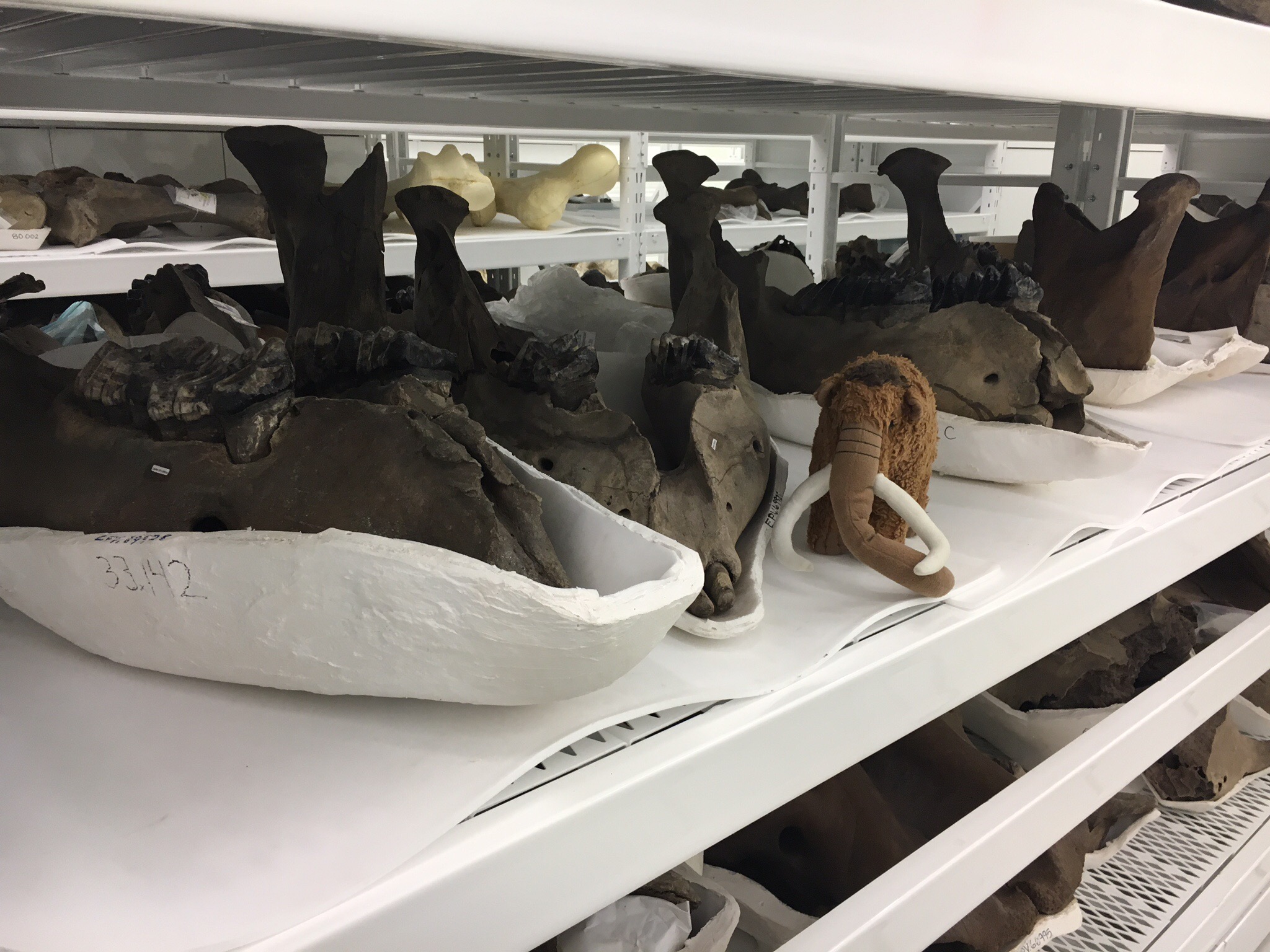 On Thursday Brett, Max, and I made our sixth stop on the "Mastodons of Unusual Size" tour, at the Denver Museum of Nature and Science.The major reason for stopping in Denver was to examine specimens from the Snowmastodon Project. In 2010 during the construction of a reservoir at Snowmass Village several thousand Ice Age fossils were discovered. There were two especially remarkable features at the site. First, at an altitude of over 8,800 feet, it was one of the highest Ice Age deposits ever found. Second, by far the most common animals were mastodons, accounting for more than half of the bones recovered. From the Rocky Mountains west to the Pacific Ocean, the vast majority of known mastodons come from just three sites - Snowmass Village, Rancho La Brea, and Diamond Valkey Lake.There are a number of very well-preserved crania and mandibles from Snowmass in the Denver collection (Max is seen above with some of the mandibles), that range from very young, perhaps even fetal, animals to an individual that was so old that its last tooth was worn to the roots (we couldn't measure that one because there wasn't enough tooth left!):
On Thursday Brett, Max, and I made our sixth stop on the "Mastodons of Unusual Size" tour, at the Denver Museum of Nature and Science.The major reason for stopping in Denver was to examine specimens from the Snowmastodon Project. In 2010 during the construction of a reservoir at Snowmass Village several thousand Ice Age fossils were discovered. There were two especially remarkable features at the site. First, at an altitude of over 8,800 feet, it was one of the highest Ice Age deposits ever found. Second, by far the most common animals were mastodons, accounting for more than half of the bones recovered. From the Rocky Mountains west to the Pacific Ocean, the vast majority of known mastodons come from just three sites - Snowmass Village, Rancho La Brea, and Diamond Valkey Lake.There are a number of very well-preserved crania and mandibles from Snowmass in the Denver collection (Max is seen above with some of the mandibles), that range from very young, perhaps even fetal, animals to an individual that was so old that its last tooth was worn to the roots (we couldn't measure that one because there wasn't enough tooth left!):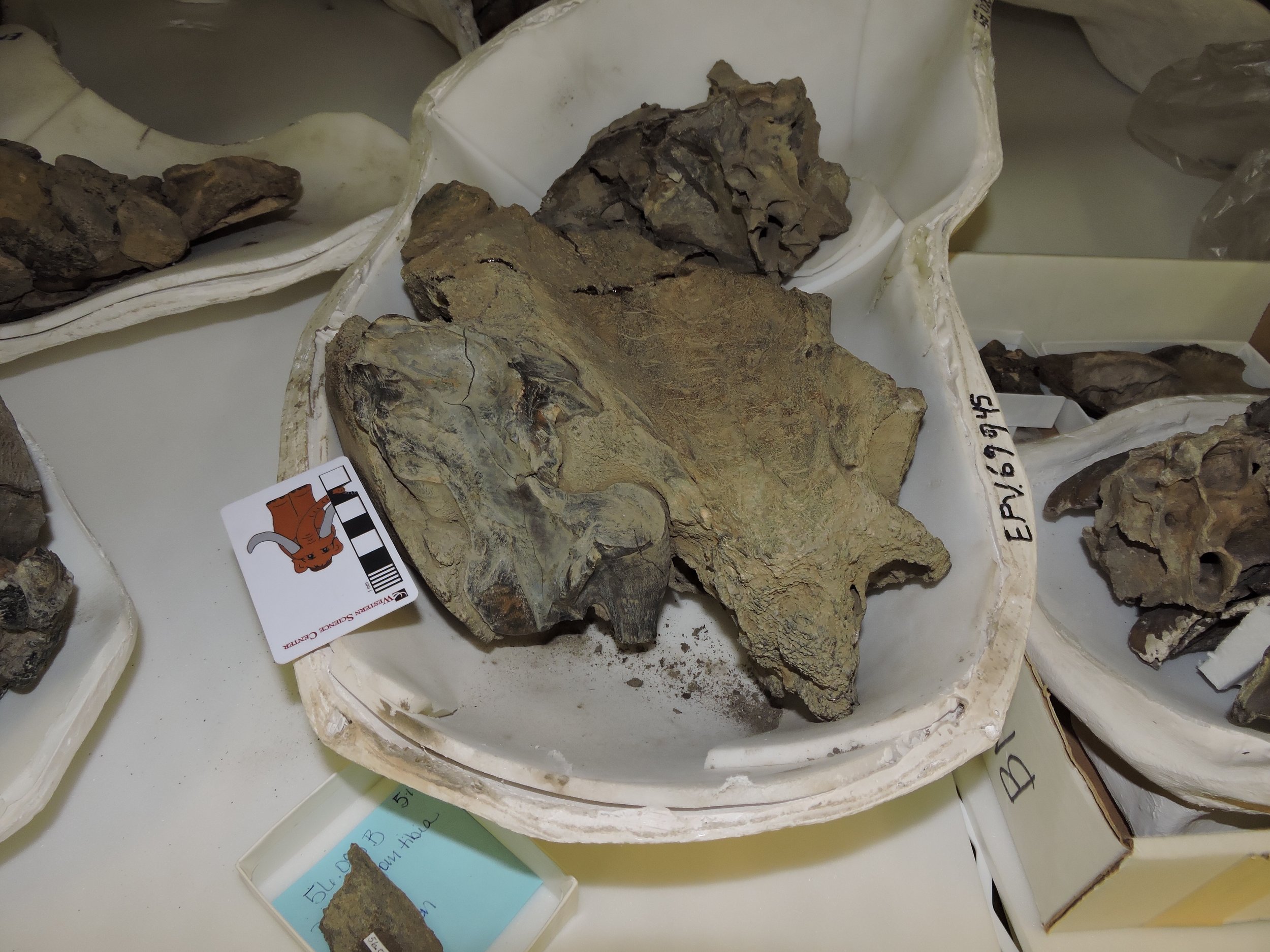 With such a large mastodon sample, we were able to measure teeth from every position and a variety of different ages. This tiny maxilla fragment preserves the first two teeth, the second and third premolars:
With such a large mastodon sample, we were able to measure teeth from every position and a variety of different ages. This tiny maxilla fragment preserves the first two teeth, the second and third premolars: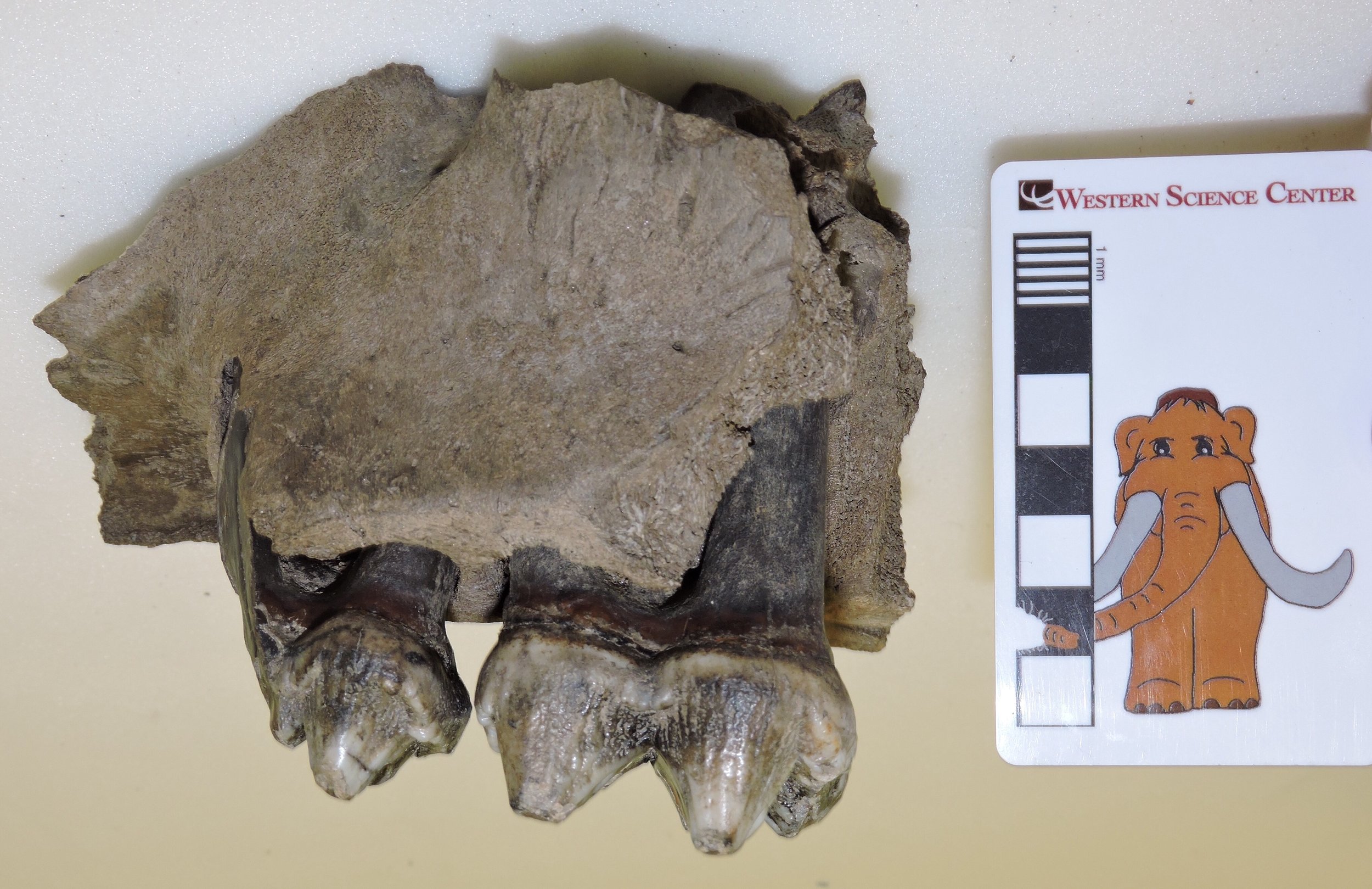 This maxilla has the third and fourth premolars:
This maxilla has the third and fourth premolars: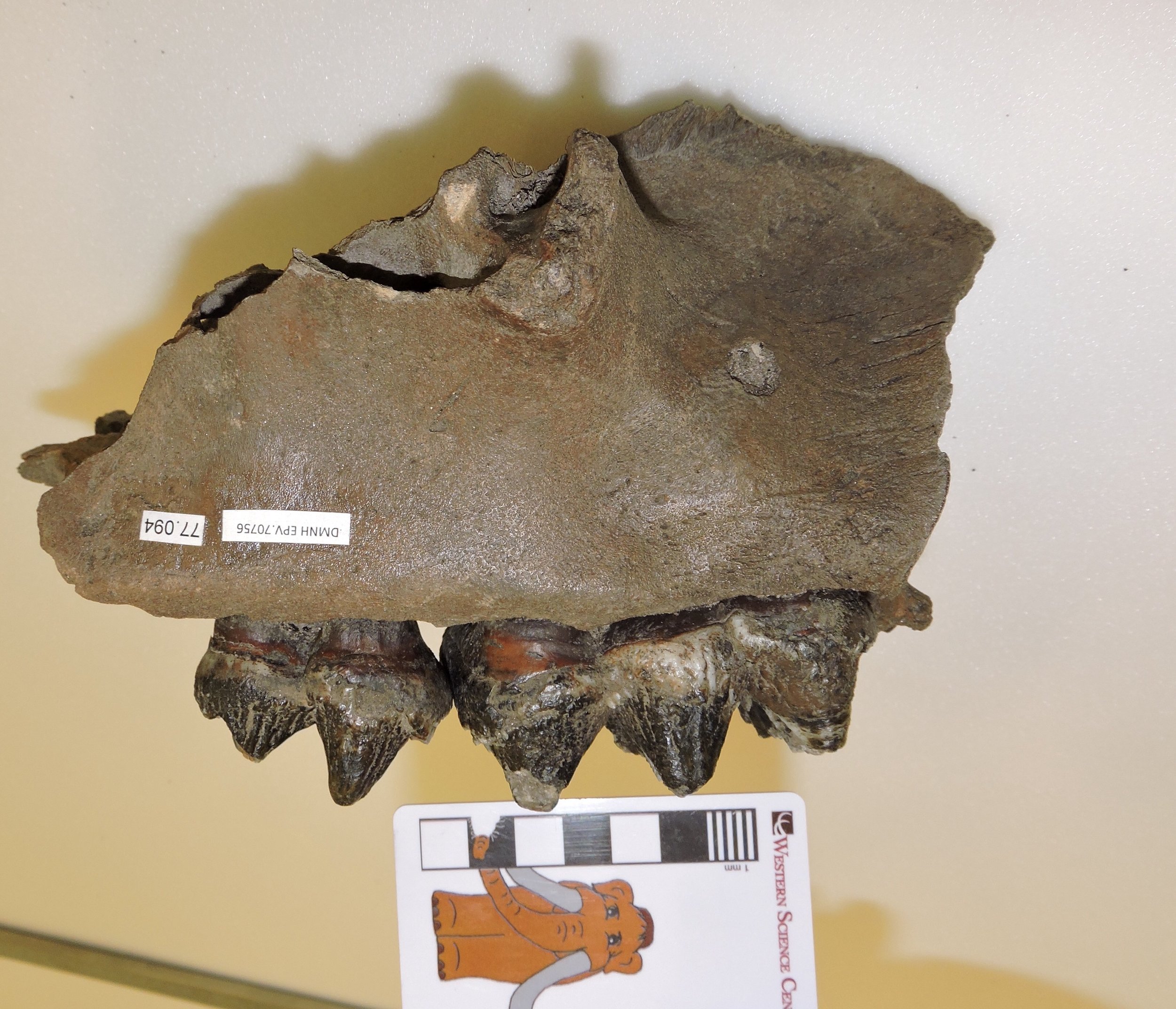 And below is a maxilla fragment with the next three teeth, the first, second, and third molars all preserved:
And below is a maxilla fragment with the next three teeth, the first, second, and third molars all preserved: 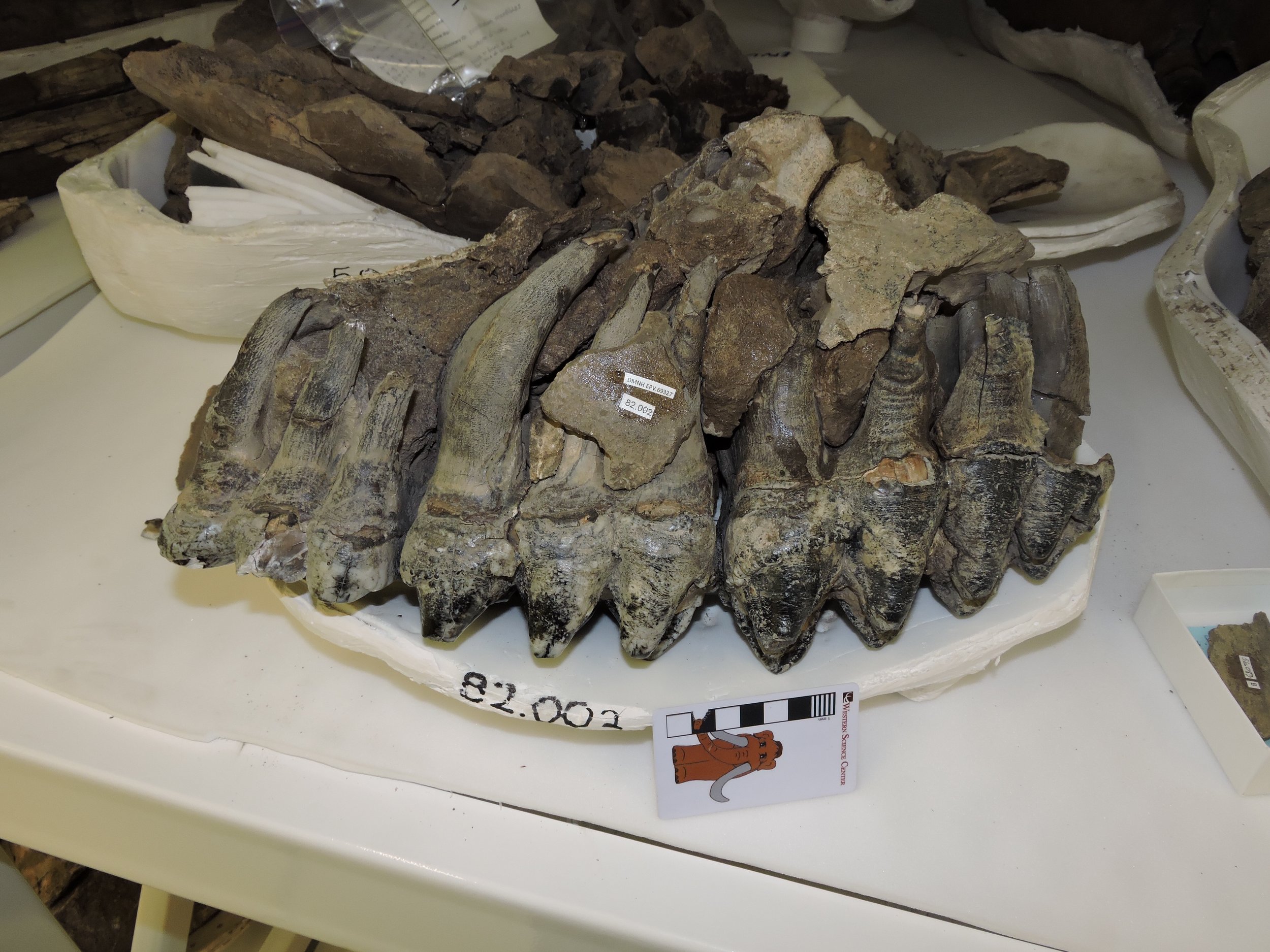 Some of the Snowmass specimens are true giants. We measured one femur (actually the cast, below) that had a distal width 11% greater than Max's:
Some of the Snowmass specimens are true giants. We measured one femur (actually the cast, below) that had a distal width 11% greater than Max's: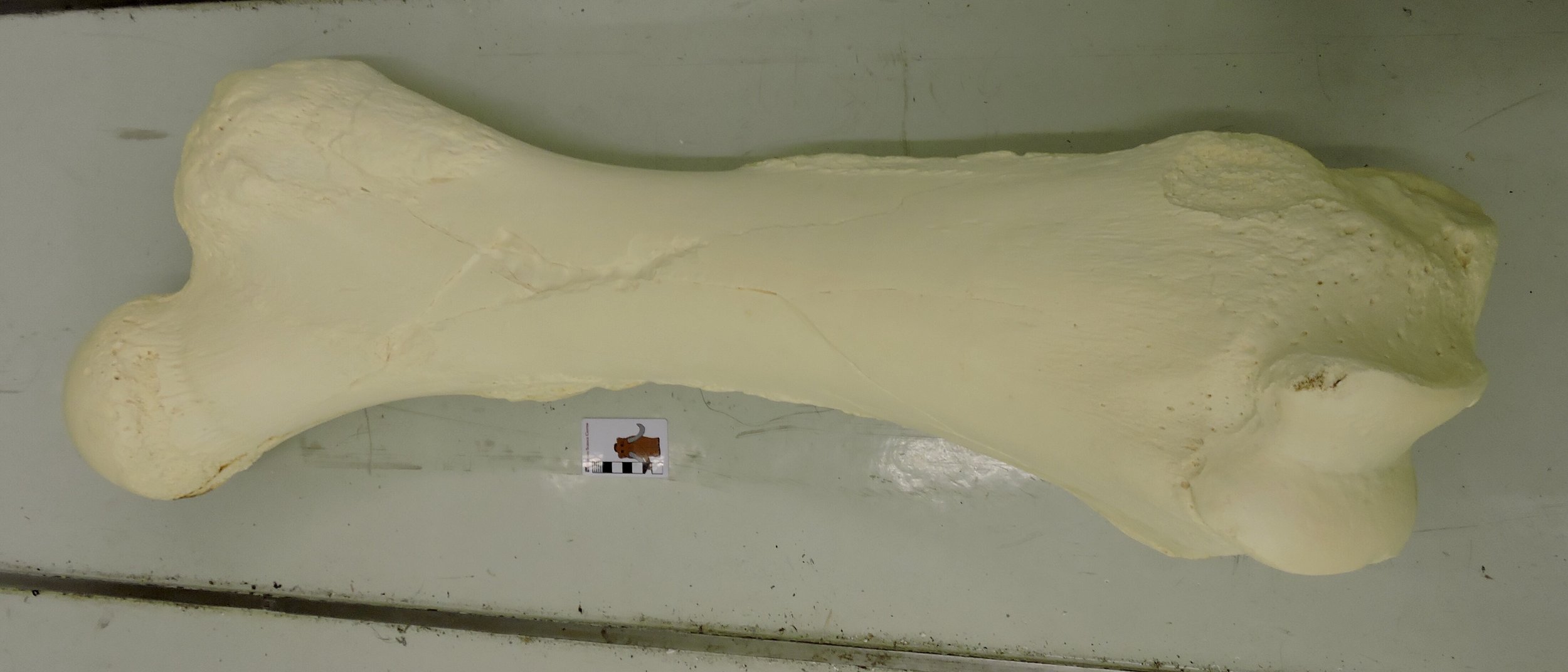 The Snowmass sample was an excellent addition to our dataset, but there were actually a few other mastodons in the DMNH collections. Below is apparently the only known mastodon tooth from Colorado that wasn't found at Snowmass:
The Snowmass sample was an excellent addition to our dataset, but there were actually a few other mastodons in the DMNH collections. Below is apparently the only known mastodon tooth from Colorado that wasn't found at Snowmass: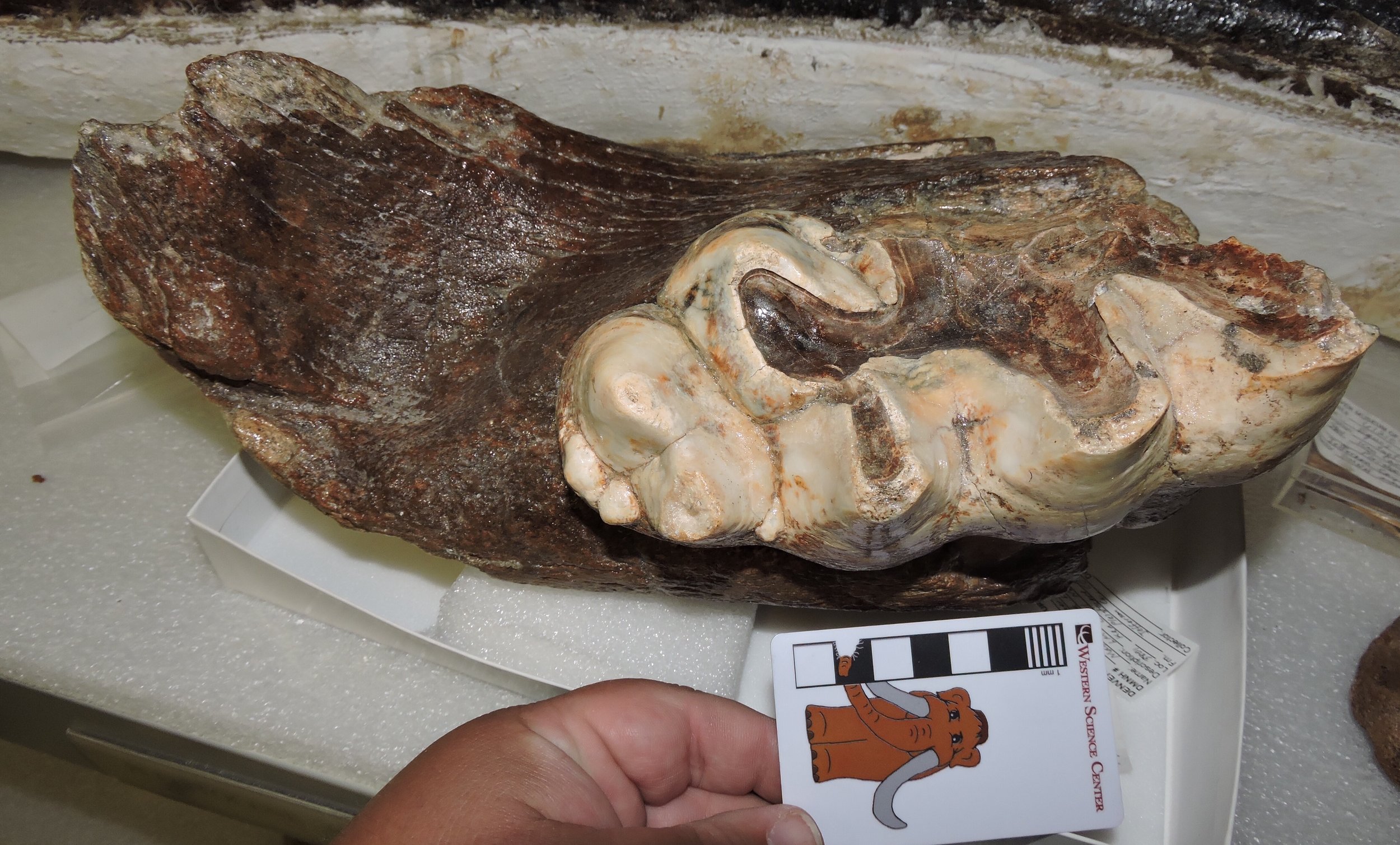 There is also an Indiana mastodon in the Denver collections. This specimen has femora that are slightly larger than Max's, and relatively rare 5-lophid lower third molars:
There is also an Indiana mastodon in the Denver collections. This specimen has femora that are slightly larger than Max's, and relatively rare 5-lophid lower third molars: 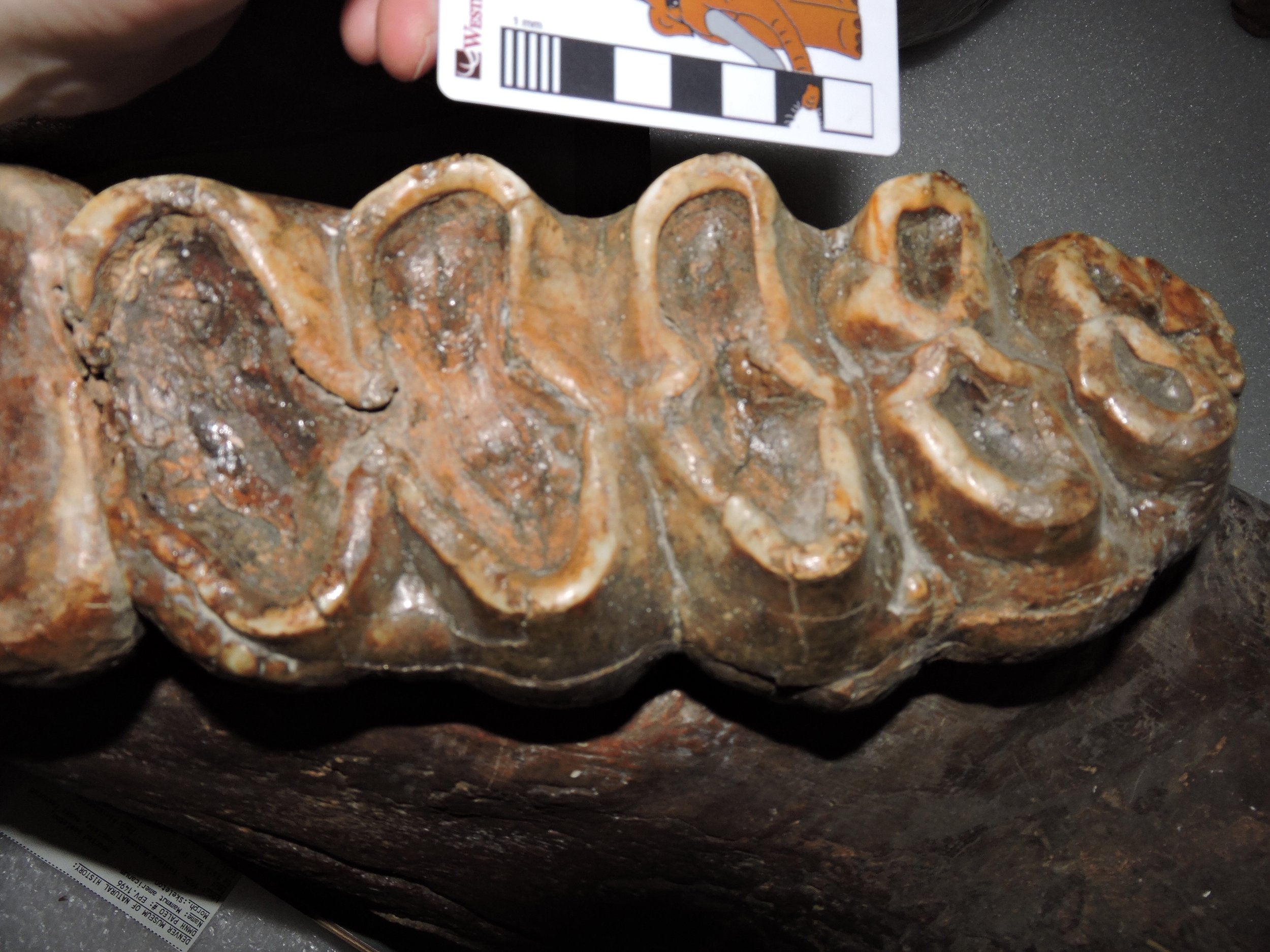 We spent seven straight hours in the Denver collections, measuring 85 mastodon teeth. It's going to take awhile for me to sort through everything and see what we have, but a few initial impressions did jump out at me. Most significantly, the Snowmass mastodons don't seem to look much like the California mastodons. Almost none of the third molars have a length:width ratio of greater than 2 (I think only one specimen), while almost every California mastodon has a ratio greater than 2. More strikingly, it seems that every Snowmass mastodon had lower tusks (as seen below), a feature that has never been observed in a California mastodon.
We spent seven straight hours in the Denver collections, measuring 85 mastodon teeth. It's going to take awhile for me to sort through everything and see what we have, but a few initial impressions did jump out at me. Most significantly, the Snowmass mastodons don't seem to look much like the California mastodons. Almost none of the third molars have a length:width ratio of greater than 2 (I think only one specimen), while almost every California mastodon has a ratio greater than 2. More strikingly, it seems that every Snowmass mastodon had lower tusks (as seen below), a feature that has never been observed in a California mastodon.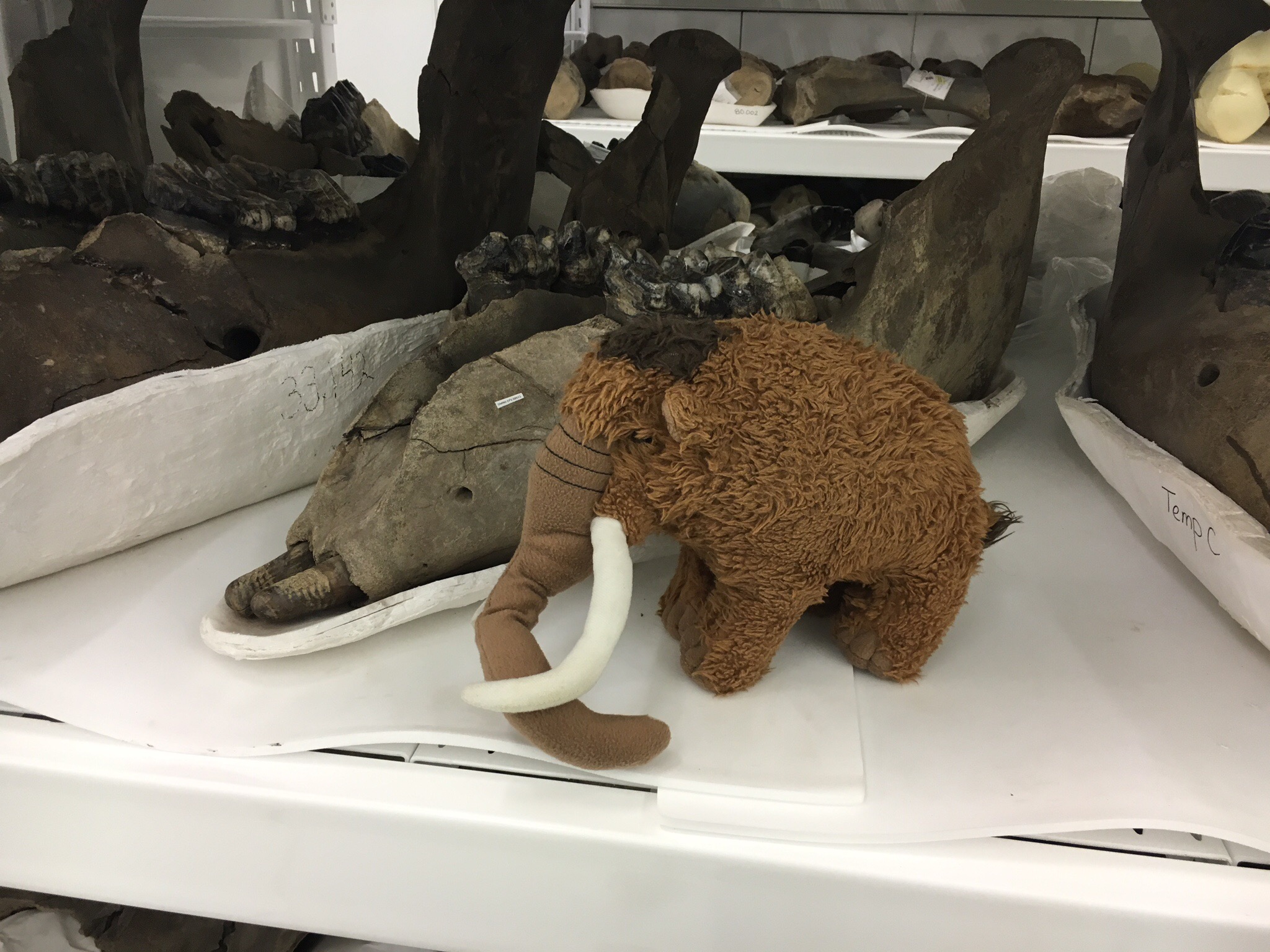 As I write this, Brett, Max, and I are on our way home to California. But this doesn't mark the end of "Mastodons of Unusual Size". We are still gathering data that's being supplied by other researchers, and still collecting data on California mastodons (we haven't even measured all the Diamond Valley Lake specimens yet). In October we'll be presenting our preliminary results at the Society of Vertebrate Paleontology meeting in Salt Lake City. And, of course, I'll be posing updates on our progress here, on Twitter, and at experiment.com.Thanks to all the curators and collections managers who provided access to the collections in their care, and to our experiment.com donors that made this trip possible.
As I write this, Brett, Max, and I are on our way home to California. But this doesn't mark the end of "Mastodons of Unusual Size". We are still gathering data that's being supplied by other researchers, and still collecting data on California mastodons (we haven't even measured all the Diamond Valley Lake specimens yet). In October we'll be presenting our preliminary results at the Society of Vertebrate Paleontology meeting in Salt Lake City. And, of course, I'll be posing updates on our progress here, on Twitter, and at experiment.com.Thanks to all the curators and collections managers who provided access to the collections in their care, and to our experiment.com donors that made this trip possible.
